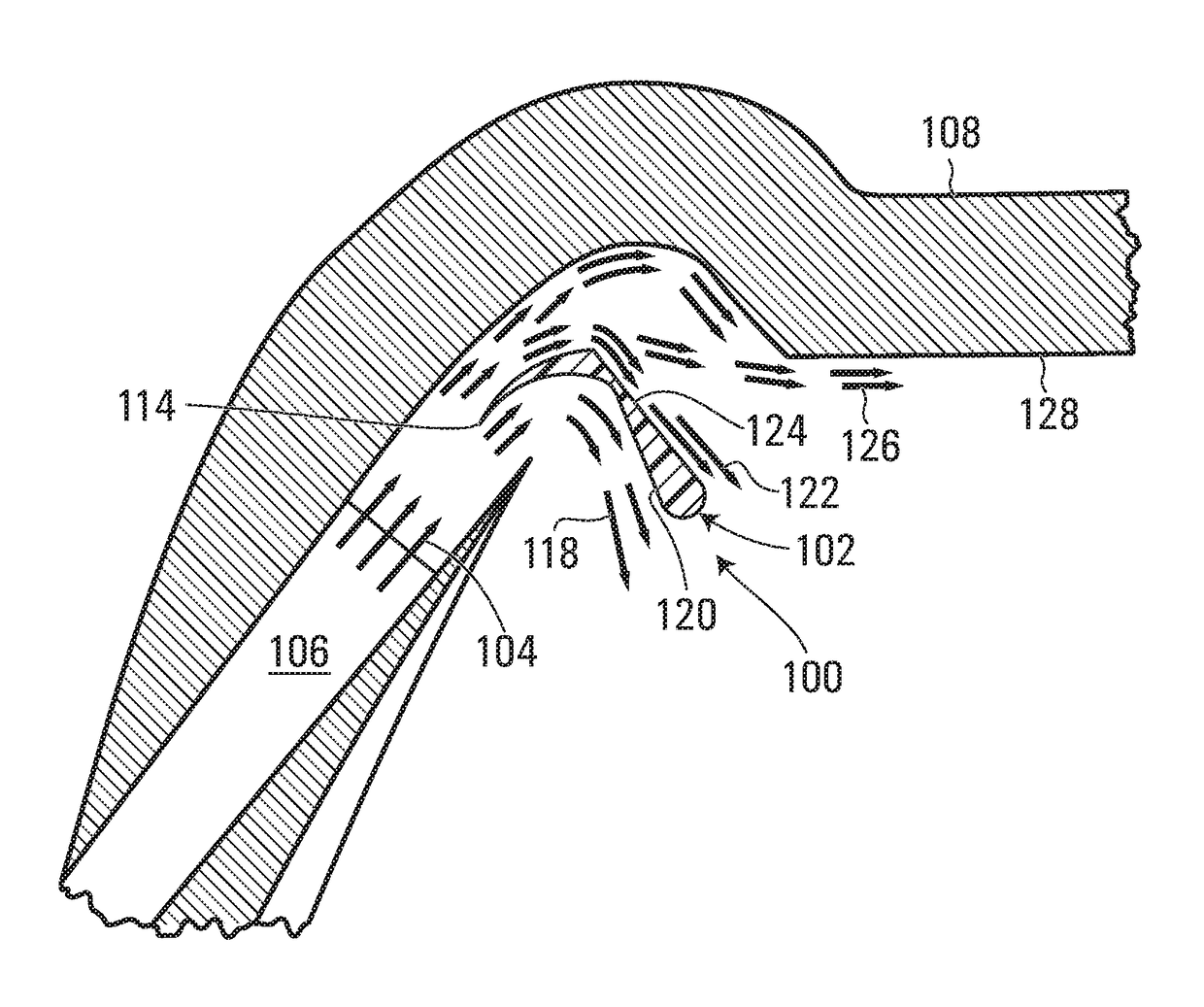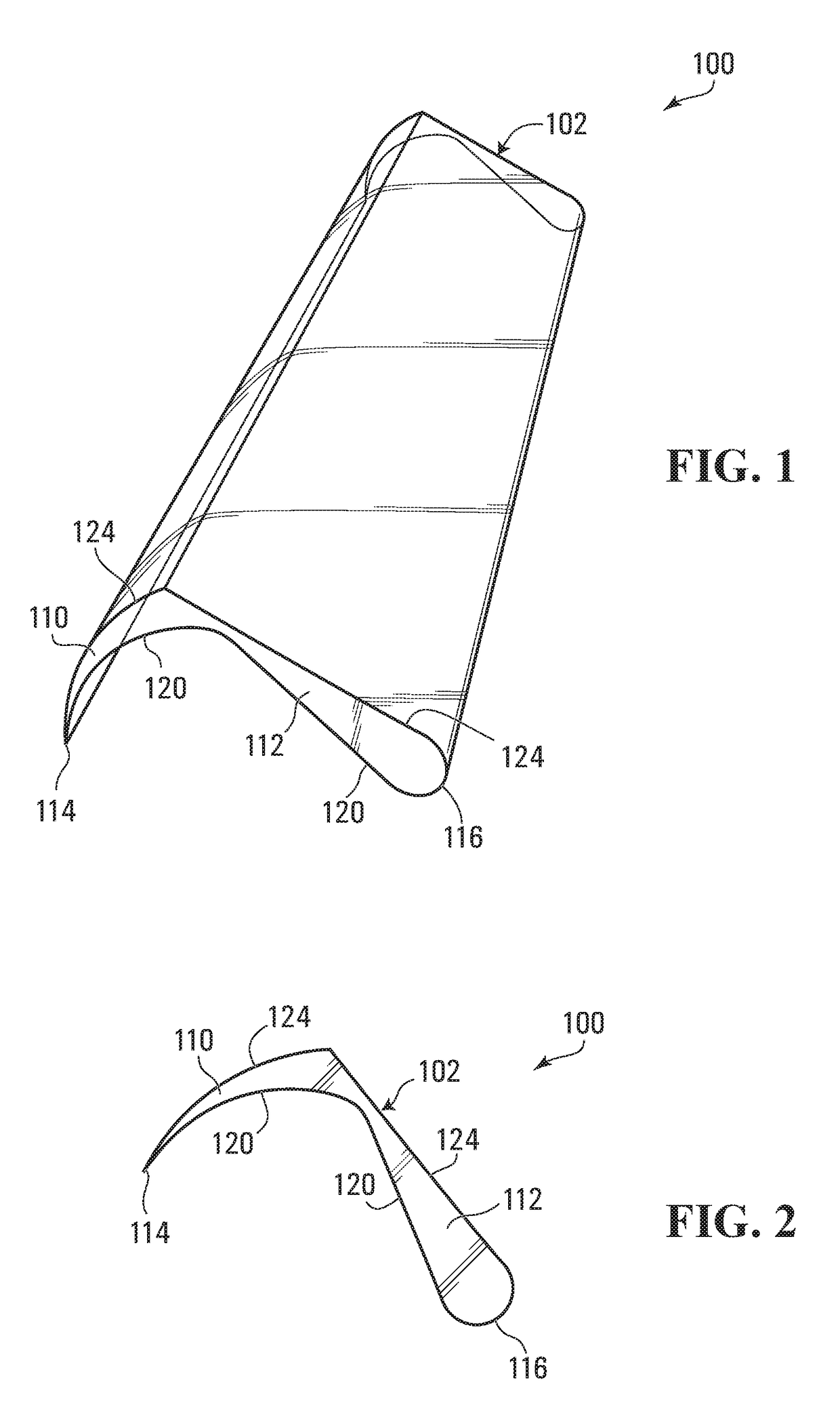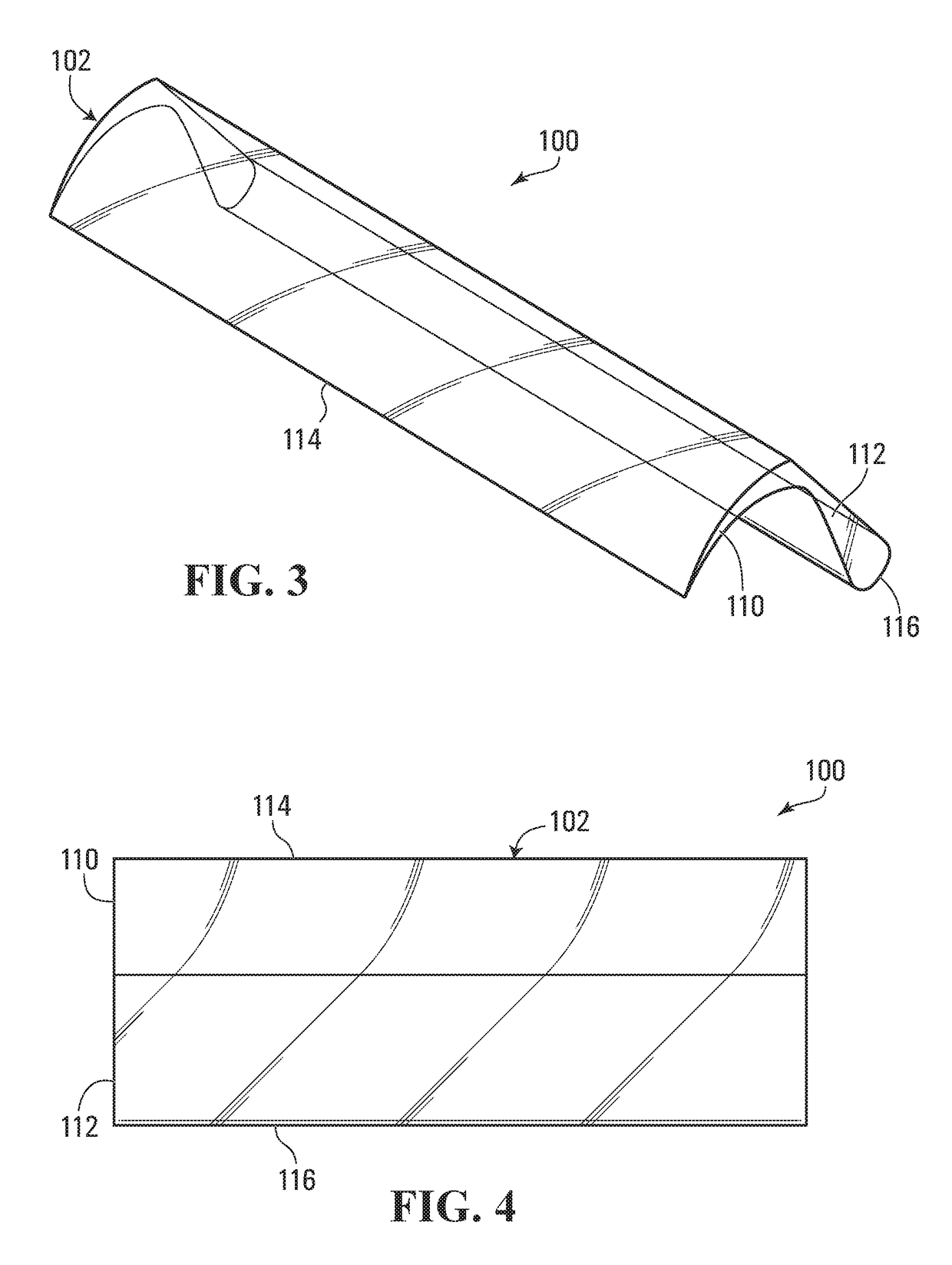Airflow modification apparatus and method
a technology of airflow and airflow, which is applied in the field of airflow modification, can solve the problems of inability to achieve the effects of reducing the number of inhaled air, and reducing the spread of airborne pathogens
- Summary
- Abstract
- Description
- Claims
- Application Information
AI Technical Summary
Benefits of technology
Problems solved by technology
Method used
Image
Examples
second embodiment
[0136]For example, referring to FIGS. 13 and 14, an apparatus according to the invention is shown generally at 1300. In this embodiment, the apparatus 1300 includes a first redirector 1302, which in turn comprises an elongated protrusion configured to be positioned on the ceiling 128 of the aircraft cabin 108. In this embodiment, the elongated first redirector 1302 extends longitudinally along the ceiling 128 of the cabin 108.
[0137]In this embodiment, the first redirector 1302 has rounded opposing outside and inside sidewalls 1304 and 1306, which extend vertically downward from the ceiling 128 of the cabin 108 while curving inward toward each other until intersecting a horizontal planar bottom surface 1308. Also in this embodiment, in addition to the curved outside and inside sidewalls 1304 and 1306, the forward and aft ends of the first redirector 1302 are also smoothly rounded with no sharp edges. Advantageously, therefore, if a passenger accidentally contacts their head against t...
third embodiment
[0152]Either alternatively or in addition to pivotal adjustment of the entire redirector, in some embodiments the angle between the dividing portion and the redirecting portion may be varied. For example, referring to FIGS. 17A to 17D, a redirector according to the invention is shown generally at 1700. In this embodiment, the redirector 1700 includes a dividing portion 1702 and a redirecting portion shown generally at 1704. More particularly, in this embodiment the redirecting portion 1704 includes a lower redirecting portion 1706 and an upper redirecting portion 1708. The dividing portion 1702 is similar to the dividing portion 110 shown in FIGS. 1-6, except that it includes an additional screwhole 1710 for pivotal attachment to the redirecting portion 1704, or more particularly for pivotal attachment to the lower and upper redirecting portions 1706 and 1708, which have respective screwholes 1712 and 1714 for accommodating the same elongated screw. In this embodiment, the upper red...
PUM
 Login to View More
Login to View More Abstract
Description
Claims
Application Information
 Login to View More
Login to View More - R&D
- Intellectual Property
- Life Sciences
- Materials
- Tech Scout
- Unparalleled Data Quality
- Higher Quality Content
- 60% Fewer Hallucinations
Browse by: Latest US Patents, China's latest patents, Technical Efficacy Thesaurus, Application Domain, Technology Topic, Popular Technical Reports.
© 2025 PatSnap. All rights reserved.Legal|Privacy policy|Modern Slavery Act Transparency Statement|Sitemap|About US| Contact US: help@patsnap.com



